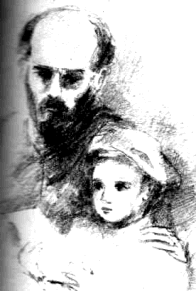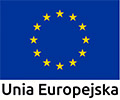Janusz Korczak - Works
Henryk Goldszmit’s rich works include novels for adults and children, theatre works, short stories and pedagogical works of literary value. His literary output includes more than twenty books and about a thousand texts printed in about seventy magazines, published mainly in the Warsaw press. In 1926, Korczak became the creator and animator of the unique magazine Mały Przegląd [Little Review].
Korczak’s literary debut took place on 26 September 1896. He published his first humoresque entitled The Gordian knot [Węzeł Gordyjski] in The Thorns [Kolce] (No. 39) under the pen name Hen. In this satirical text he presented a picture of hearth and home where parents are replaced by, among others, nannies and governesses. The aim of the humoresque was to encourage parents to take a more serious interest in bringing up their children.
Henryk Goldszmit received his first distinction in 1899 for his play entitled Which way? [Którędy?] submitted for the I.J. Paderewski Literary Contest. He used Janasz Korczak as a pen name for the drama (taken from Józef Ignacy Kraszewski’s book Janasz Korczak and the Pretty Swordsweeperlady [Historia o Janaszu Korczaku i pięknej Miecznikównie], but the press mistakenly printed the name Janusz and from then on he used this form.
The play Which way? [Którędy?] is a drama in four acts. Its main protagonist is the father of the family, depicted as an irritated man. The text of the play Which way? has not survived.
In 1937, Janusz Korczak received the Golden Laurel of the Polish Academy of Literature for his outstanding literary work.
Korczak’s first novel is Children of the Streets [Dzieci ulicy]. It was published in episodes in 1901 in the magazine Czytelnia dla Wszystkich. Tygodnik literacko-powieściowy dla rodzin polskich. The novel shows the life of children from Warsaw streets known from the author’s observations.
The first stories for children were published in Family Evenings [Wieczory Rodzinne] under the pen name Janusz and Janusz Korczak. It included the following texts: What do toys say [Co mówią zabawki?], The nicest gift [Najmilszy podarek], A chat [Pogawędka], Moving house [Przeprowadzka].
The peak period of Henryk Goldszmit’s literary activity falls in the years 1918-1931.
The writer’s last work was Playful pedagogy [Pedagogika żartobliwa] of 1939. In this publication Korczak presented the situation of a child in society in a funny and humorous form. He drew adults’ attention to respecting the “child’s right to respect”.
Korczak’s last notes are included in the Diary [Pamiętnik] of 1942. They were created in the Warsaw ghetto in the period from May to August. It is an autobiographical document constituting the “voice of Korczak’s protest against the cruelty of the Nazi occupiers towards children, adults, cut off from the rest of the city, from the world”.
He also carried out his pedagogical activity through numerous speeches and lectures, among others, at the Professional Association of Teachers of Primary Schools he gave a lecture entitled Discipline in class [Dyscyplina w klasie] (1925) and Student government [Samorząd szkolny] (1928), and in the premises of the “Tarbut” Society he spoke about The personal life of the educator [Życie osobiste wychowawcy] (1925). He took part in collective lectures organised by various Jewish organisations.
Korczak’s works were intended to sensitize society to the harm done to children, to the lack of understanding of children’s problems by the adult world, and to draw parents’ attention to the reasons for their failure to bring up children.

Bibliography
- M. Falkowska, Kalendarz życia, działalności i twórczości Janusza Korczaka. T.3, Warszawa 1989.
- W. Okoń, Wizerunki sławnych pedagogów polskich. Warszawa 1993.
- A. Szlązakowa, Janusz Korczak w legendzie poetyckiej, Warszawa 1992.





